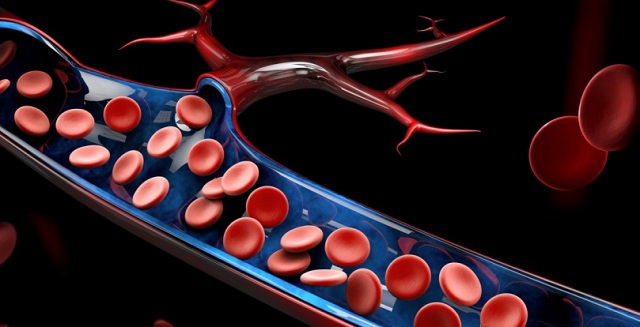
Kampala, Uganda | THE INDEPENDENT | Around the world, an astonishing one in four people are dying from conditions related to thrombosis. And even when the condition doesn’t kill, it can dramatically affect the quality of life of the person who suffers from it.
Thrombosis is the formation of a blood clot in a blood vessel, be it a vein or an artery. The clot itself is termed a thrombus.
Once formed, a clot can slow or block normal blood flow, and even break loose and travel to an organ. A clot that travels to the circulation is called an embolus. Thrombosis is the often-preventable underlying pathology of heart attack, thromboembolic stroke, and venous thromboembolism (VTE) – the top three cardiovascular killers.
“Despite the danger of thrombosis, many people might not think to check for it or even know that they’re at risk,” says Dr Henry Ddungu, a consultant Hematologist at the Uganda Cancer Institute, and a member of the World Thrombosis Day Steering Committee.
According to Dr Ddungu, understanding your risk and early identification of a clot can be critical to countering complications thereof. That makes educating people about the different types of thrombosis especially important.
Venous, arterial, and pulmonary embolisms
Broadly speaking, there are two types of thrombosis with the classification depending on where in the body the clot occurs. Venous thrombosis occurs in the veins, while arterial thrombosis occurs in the arteries.
“Both categorizations of thrombosis work similarly,” says Dr Ddungu. “Both are also influenced by risk factors that are either inherited genetically or acquired through lifestyle.”
Arterial thrombosis can result in heart attacks, strokes, transient ischemic attack (TIA) or “mini-strokes”, and critical limb ischemia if left untreated.
Venous thromboembolism or VTE is a condition in which blood clots form, most often in the deep veins of the leg, known as deep vein thrombosis or DVT, and can travel in the circulation and lodge in the lungs, to cause a complication known as pulmonary embolism or PE.
Within venous thrombosis, superficial venous thrombosis is inflammation and clotting in a superficial vein, usually in the arms or legs. Renal vein thrombosis, meanwhile, is a clot in one of the main renal veins, resulting in acute kidney injury or chronic kidney disease.
Preventable and treatable
Fortunately, thrombosis is preventable and treatable, especially if detected early.
According to Dr Ddungu, “available evidence-based prevention strategies can stop the development of clots in ‘at-risk’ individuals.”
“To identify whether a patient is ‘at-risk,’ healthcare professionals conduct a VTE risk assessment,” he says.
This takes the shape of a tool or questionnaire that gathers information about a patient’s age, medical history, medications, and specific lifestyle factors. Information is then used to discern a patient’s potential risk (e.g., high, moderate, or low risk) for developing blood clots in the legs or lungs.
From there, the medical team may order tests, including a blood test called a D-Dimer, an ultrasound of the involved limb to look for the DVT, or a CT scan of the chest with intravenous dye to look for a PE.
Even if the tests come back clear, Dr Ddungu advises that at-risk patients be given preventative medicine.
“Anti-clotting medication (anticoagulants), and mechanical devices such as compression stockings can help,” he says. “Hospitalized patients may also be instructed to move around or do foot/leg exercises as soon and as often as possible.”
Treatment meanwhile usually takes the form of blood thinning medication to help prevent further clot formation as the body’s natural system breaks up the clots. Patients should be on the lookout for pain or tenderness, often starting in the calf; swelling, including the ankle or foot; redness or noticeable discoloration; and warmth.
Depending on specific conditions, a patient might need:
- Anticoagulants (e.g., injectables such as heparin, enoxaparin, or low molecular weight heparin, or tablets such as apixaban, dabigatran and rivaroxaban, edaxaban and warfarin)
- Mechanical devices (e.g., compression stockings which may decrease your risk of long-term problems that can be caused from having clots or a special filter placed in a vein)
- Thrombolytic therapy, or clot busters (e.g., tissue plasminogen activator)
No discrimination
Clots can affect anyone regardless of location, age, ethnicity, or race. It’s therefore imperative that people know their risk factor, get tested, and seek out treatment if necessary.
“People who prevent thrombosis or catch it early on can live long, healthy lives with their families,” concludes Dr Ddungu. “A little education can go a long way to ensuring they do.”
 The Independent Uganda: You get the Truth we Pay the Price
The Independent Uganda: You get the Truth we Pay the Price


